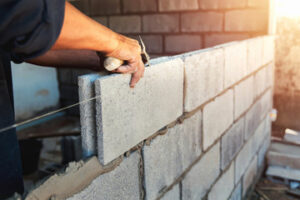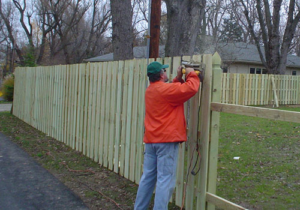Masonry construction continues to evolve in the world of building innovation. It is no longer limited to traditional brick and mortar methods. Today, it embraces high-performance systems that address modern architectural needs. This evolution allows greater flexibility in both design and functionality.

Sustainable masonry materials are becoming more prevalent in recent projects. Builders are now integrating recycled aggregates into masonry units. These materials reduce carbon footprints and support green construction goals. The shift reflects the rising demand for environmental responsibility. Find Out More Here by reading the article below.
One important innovation in masonry construction is the use of aerated blocks. These lightweight units help reduce structural loads. They also provide better thermal insulation compared to conventional units. This supports energy efficiency in residential and commercial structures.
Digital fabrication is influencing masonry work on various levels. 3D scanning and robotic bricklaying are becoming more accessible. These technologies improve speed, precision, and consistency in construction. They also reduce human error and enhance worker safety.
Masonry construction is now being tailored to meet seismic resistance standards. Engineers are reinforcing walls with hybrid systems for added durability. These include fiber-reinforced polymers and steel mesh layers. Such improvements ensure resilience during earthquakes.
Another trend is the use of self-healing mortars. These specialized binders contain bacteria or capsules that activate with moisture. Once cracks form, the healing agents seal them automatically. This reduces maintenance and extends structural lifespan.
Designers are also exploring masonry in non-load-bearing applications. From perforated walls to artistic facades, masonry now serves decorative purposes. These patterns improve ventilation and light control. Aesthetic customization has never been more diverse.
Permeable masonry pavers are gaining popularity in urban developments. They allow stormwater to seep through and recharge the ground. This reduces runoff and mitigates flooding in high-density areas. It’s a practical solution for climate-resilient cities.
The acoustic properties of masonry are now being optimized for interior environments. Dense block configurations are designed to absorb and isolate sound. This is beneficial for schools, theaters, and residential units. Masonry thus plays a role in improving indoor quality.
Smart monitoring systems are also embedded within masonry walls. Sensors are installed to track moisture, temperature, and structural shifts. Data collected can predict deterioration or maintenance needs early. This enables preventive care and prolongs building life.
The shift toward modular masonry units is redefining efficiency. Interlocking blocks cut construction time significantly. They require less mortar and reduce curing periods. As a result, labor costs and delays are minimized.
Hybrid systems that combine masonry with steel or timber are increasingly adopted. These systems balance strength and flexibility. They are ideal for multi-story developments in complex environments. This approach ensures speed without sacrificing safety.
Masonry’s thermal mass is being strategically used to regulate building temperatures. Walls can absorb heat during the day and release it at night. This stabilizes indoor conditions and reduces HVAC dependency. Energy bills become more manageable over time.
Fire-resistance standards for masonry materials are continually improving. Innovations ensure that units can withstand higher temperatures for longer durations. This is crucial for high-risk zones or industrial facilities. Fireproofing adds another layer of protection.
Digital twin technology is being applied in masonry project planning. Virtual replicas of buildings allow simulation before actual construction. Builders can test various load scenarios and weather conditions. This enhances precision in execution.
Training for masonry professionals is also being modernized. Virtual reality is used to teach techniques and safety protocols. It offers an immersive learning experience for apprentices. This helps bridge the skill gap in the workforce.
The circular economy model is encouraging masonry material reuse. Salvaged bricks and blocks are reprocessed for new construction. This minimizes waste and reduces demand for virgin materials. It aligns with principles of sustainable development.
Color-stabilized masonry units are now engineered to resist UV damage. These products retain their appearance even under prolonged sun exposure. They eliminate the need for repainting or refinishing. Buildings stay vibrant for years with minimal upkeep.
Building information modeling or BIM integrates with masonry design efficiently. It enables collaborative planning among engineers, architects, and contractors. Clash detection and resource management are simplified. The process results in fewer errors and faster delivery.
Insulated masonry systems are gaining attention in cold and warm climates alike. These walls combine structural blocks with embedded insulation. They reduce thermal bridging and boost energy performance. Occupants enjoy greater comfort year-round.
Wind-resistant masonry systems are critical in storm-prone areas. Special anchoring methods help resist high-pressure conditions. These innovations keep walls intact during severe weather events. They are essential for disaster-prone communities.
There is also a growing focus on the lifecycle analysis of masonry structures. This involves evaluating the environmental impact from production to demolition. It informs decisions on material selection and reuse strategies. Builders can make better choices for the long term.
Innovative bonding patterns are being explored for both form and function. Certain layouts improve structural performance under lateral forces. Others allow creative architectural expression. This blends engineering precision with artistic intent.
Vapor-permeable mortars are another innovation worth noting. These allow moisture to escape without compromising wall strength. They prevent mold buildup and enhance indoor air quality. Ideal for buildings in humid climates.
The integration of solar components into masonry walls is a cutting-edge concept. Units embedded with photovoltaic cells generate renewable energy. This turns passive materials into energy-producing surfaces. It supports sustainability and lowers electricity use.
Flexible masonry cladding is used in retrofitting old structures. These thin layers mimic traditional masonry but are lightweight and easy to install. They preserve heritage appearance while meeting new performance standards. It’s a balance of the old and the new.
Drone-assisted inspection is improving masonry maintenance processes. Aerial views help detect cracks, erosion, and mortar issues. This approach is faster and safer than manual checks. Building upkeep becomes more cost-effective.
Noise control regulations are pushing the boundaries of acoustic masonry. Enhanced wall designs reduce noise transfer in urban settings. These features are ideal for apartments and high-traffic zones. Acoustic comfort is essential for well-being.
Chemical admixtures in mortar are tailored for specific site conditions. These improve workability, bonding, and curing in various climates. Custom mixes support performance in both dry and wet regions. Builders can ensure quality regardless of location.
New testing standards are being developed for masonry resilience. These include simulations for flood exposure, thermal shock, and impact resistance. Results guide improvements in design and formulation. Structures become more reliable against diverse risks.
Cultural influences are shaping masonry aesthetics in new ways. Traditional motifs are being recreated with modern materials. This brings identity and heritage into contemporary buildings. The result is culturally rich and visually stunning architecture.
Efforts are ongoing to make masonry more inclusive and labor-friendly. Tools are designed with ergonomics in mind to reduce strain. New lifting devices and machines assist with block placement. Worker health and safety are top priorities.
Masonry systems are also being integrated with rainwater harvesting features. Hollow blocks channel water into storage tanks beneath structures. This innovation conserves water and supports eco-friendly living. It’s particularly useful in water-scarce regions.
The future of masonry lies in adaptive technologies and materials. Innovations are shaping it into a responsive building solution. Each advancement pushes the limits of what stone and mortar can do. Masonry is no longer static but dynamic in function and design.
This field continues to thrive because of its unique balance of history and innovation. Traditional strength combines with digital transformation and eco-conscious choices. Each brick tells a story of where construction is heading. With every wall raised, new possibilities emerge.

